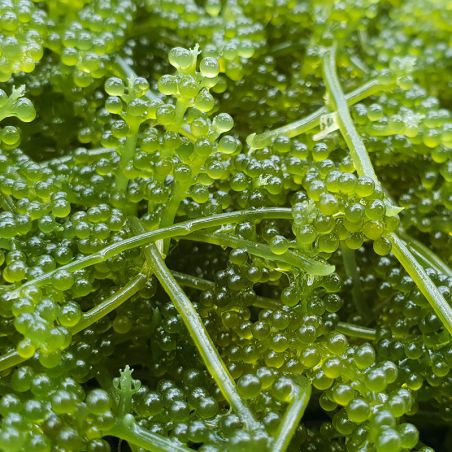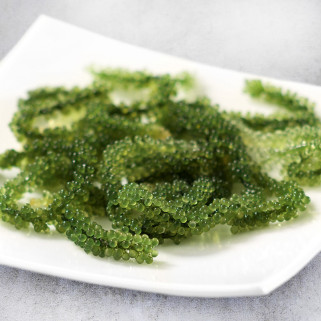Add to my wishlist "Puchipuchi umibudo sea grape"
Select a wishlist to add this product
There are not wishlist.
This product has been added to wishlist.
View my Wishlists
This product has been added to your wish list.
Remove
This product was successfully removed from your wish lists.


Add to my wishlist "Puchipuchi umibudo sea grape"
Select a wishlist to add this product
There are not wishlist.
This product has been added to wishlist.
View my Wishlists
This product has been added to your wish list.
Remove
This product was successfully removed from your wish lists.
€7.85
€196.25 / Kg
(1 review)


Add to my wishlist "Puchipuchi umibudo sea grape"
Select a wishlist to add this product
There are not wishlist.
This product has been added to wishlist.
View my Wishlists
This product has been added to your wish list.
Remove
This product was successfully removed from your wish lists.
Umibudo
Umibudo (literally sea grape in Japanese) is a species of green seaweed shaped like a miniature grapes bunc. Our umibudo is grown and harvested in mineral-rich seawater, drawn from a depth of 612 m in the ocean near Kumejima.
Umibudo quality we've selected is highly appreciated in Okinawa Prefecture. Sea grapes, once harvested by...
€7.85
€196.25 / Kg
(1 review)


Add to my wishlist "Puchipuchi umibudo sea grape"
Select a wishlist to add this product
There are not wishlist.
This product has been added to wishlist.
View my Wishlists
This product has been added to your wish list.
Remove
This product was successfully removed from your wish lists.
Umibudo
Umibudo (literally sea grape in Japanese) is a species of green seaweed shaped like a miniature grapes bunc. Our umibudo is grown and harvested in mineral-rich seawater, drawn from a depth of 612 m in the ocean near Kumejima.
Umibudo quality we've selected is highly appreciated in Okinawa Prefecture. Sea grapes, once harvested by...
€7.85
€196.25 / Kg
(1 review)















































